Vintage Fender guitars were some of the most commonly modified, refinished, and played guitars out there so it's important to be able to identify original aspects and non-original modifications and repairs. I'd like to continue documenting original Fender guitars like this 1966 Fender Jaguar inside and out so that we can all get familiar with what they should look like. I bought this clean vintage Fender Jaguar from the original owner's family who was looking to sell their vintage Fender guitar. I was pleased to find that it is completely original and unmodified throughout. Here's what it looks like underneath the pickguard:
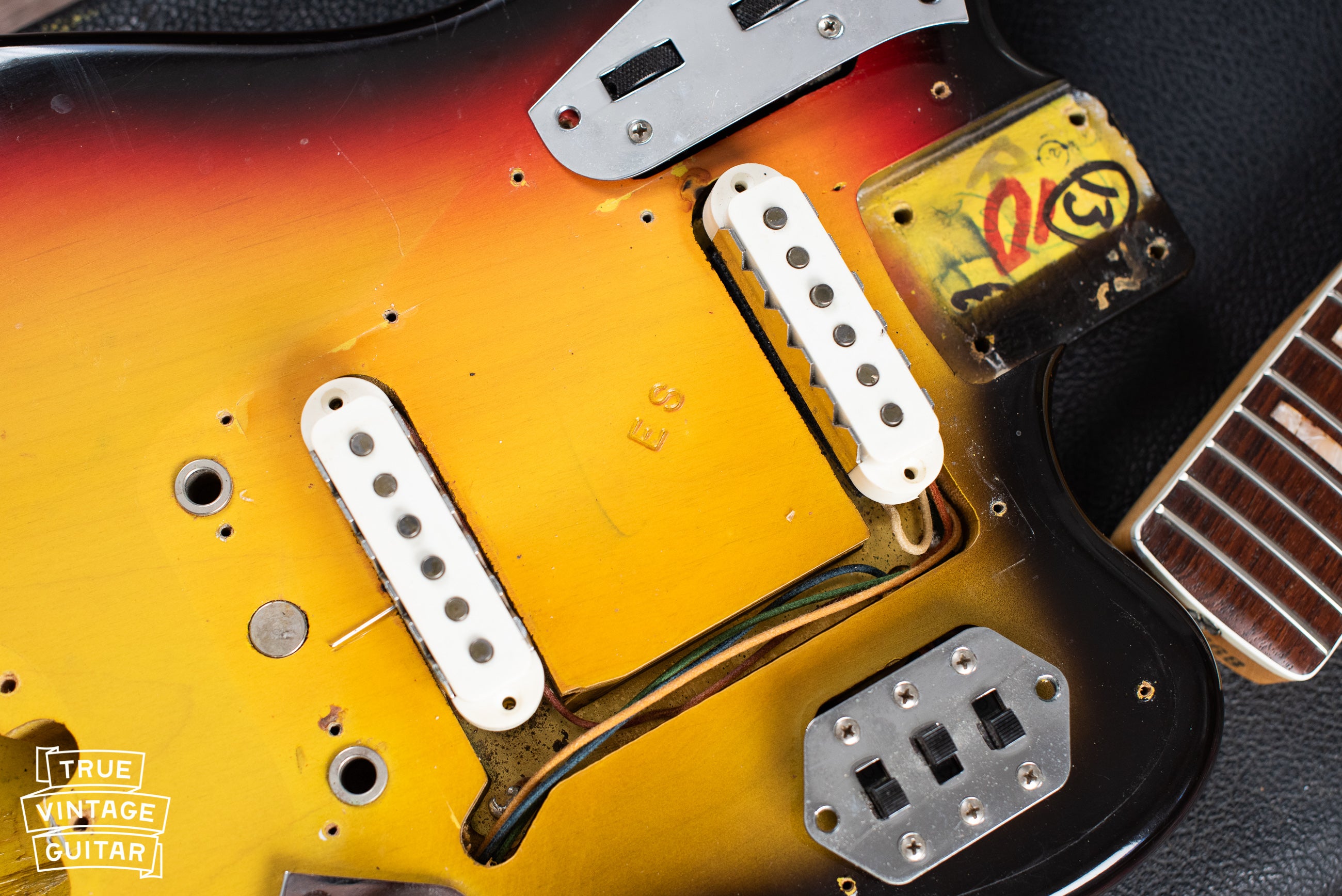
This is a nice original Sunburst finish from Fender in the 1960s. The first thing my eye is drawn to is the "ES" stamp. Most guitar resources will say that these two lettered stand for "Entered Special" and that it was commonly applied to Fender guitars from 1966 that were either a special order, meant for a certain dealer, or for the NAMM show. My experience with vintage Fender electric guitars from 1966 indicates that it was used on most, if not all, Fender guitars made in 1966. I have not yet found a pattern for exactly what it means. Do you have more information on the ES stamp? Drop me a comment. I'd love to hear your information.
There is another interesting vintage Fender tell tale sign in this picture: nail holes. There is one nail hole between the neck pickup and neck pocket, one next to the bottom screw hole in the control plate area, and one on the bass side of the tremolo plate screw hole. Nails were inserted into these holes to support the body of the guitar while the finish was curing during this time period. It's interesting to spot the nail holes since they were largely gone by late 1964 or early 1965. The paint stick, screwed to the body in the neck pocket, was then used to support the body. The nail holes are particularly helpful for determining an original finish since refinished guitars will likely have paint over the nail hole.
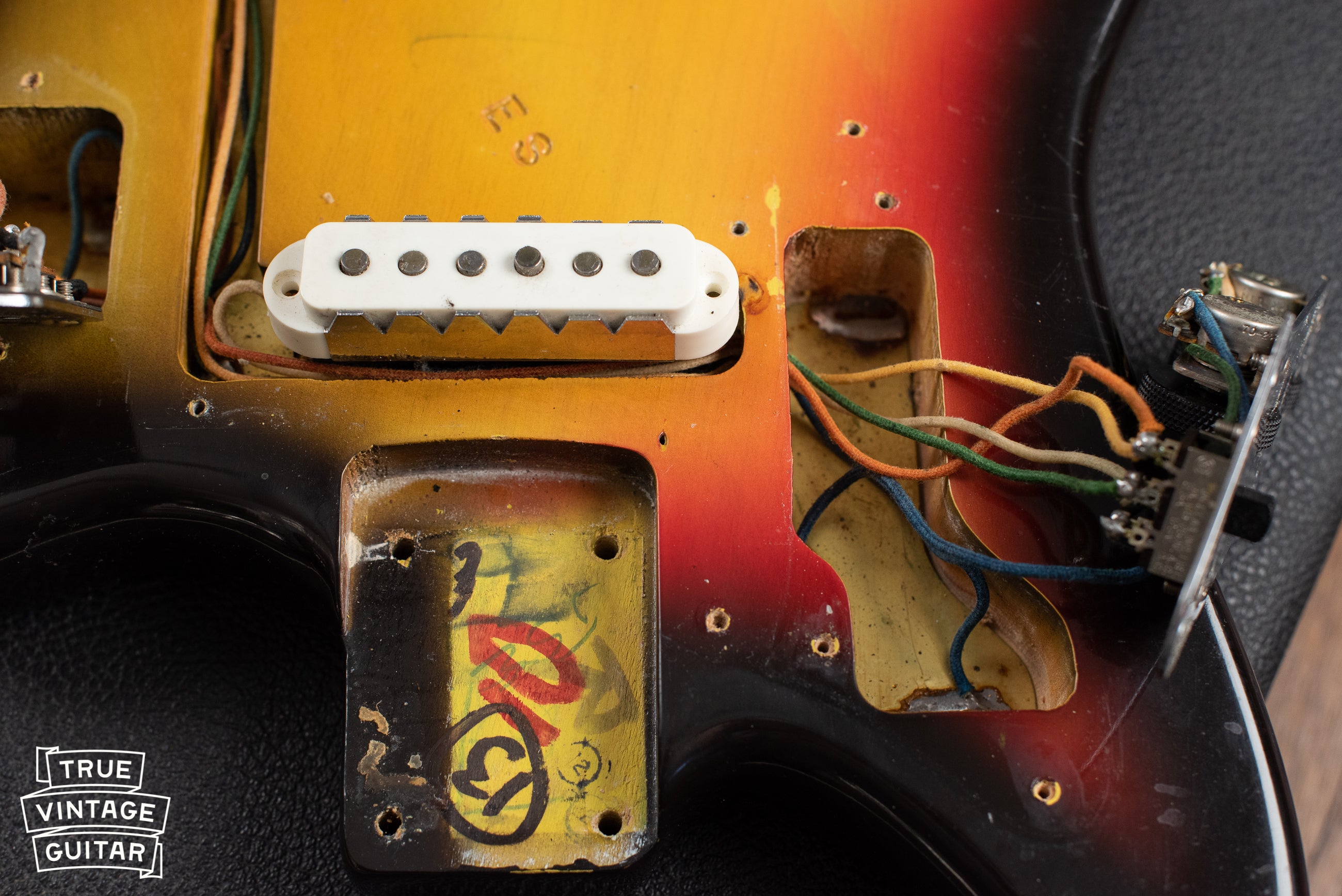
This is the pocket routed into the body to hold the neck, commonly called the neck pocket. The pattern of a painted treble side of the pocket and yellow undercoat with no black paint on the bass side is called the paint stick mark. The paint stick was a metal pipe that was hammered flat at the end and screwed to the neck pocket. It was used to hold the body up so a finisher could paint the rest of the body without touching the fresh paint. The paint stick mark starts showing up on vintage Fender guitars in about 1962 where previously only nail holes were used. Fender guitars from 1961 and earlier will not have this paint stick mark if they still have their original finish.
We can also see a lot of employee signed numbers and markings in the blank area underneath where the paint stick went. I'll admit that I don't have good research for what each of these markings mean but suspect that they are markings to sign off after each step in the process was complete.
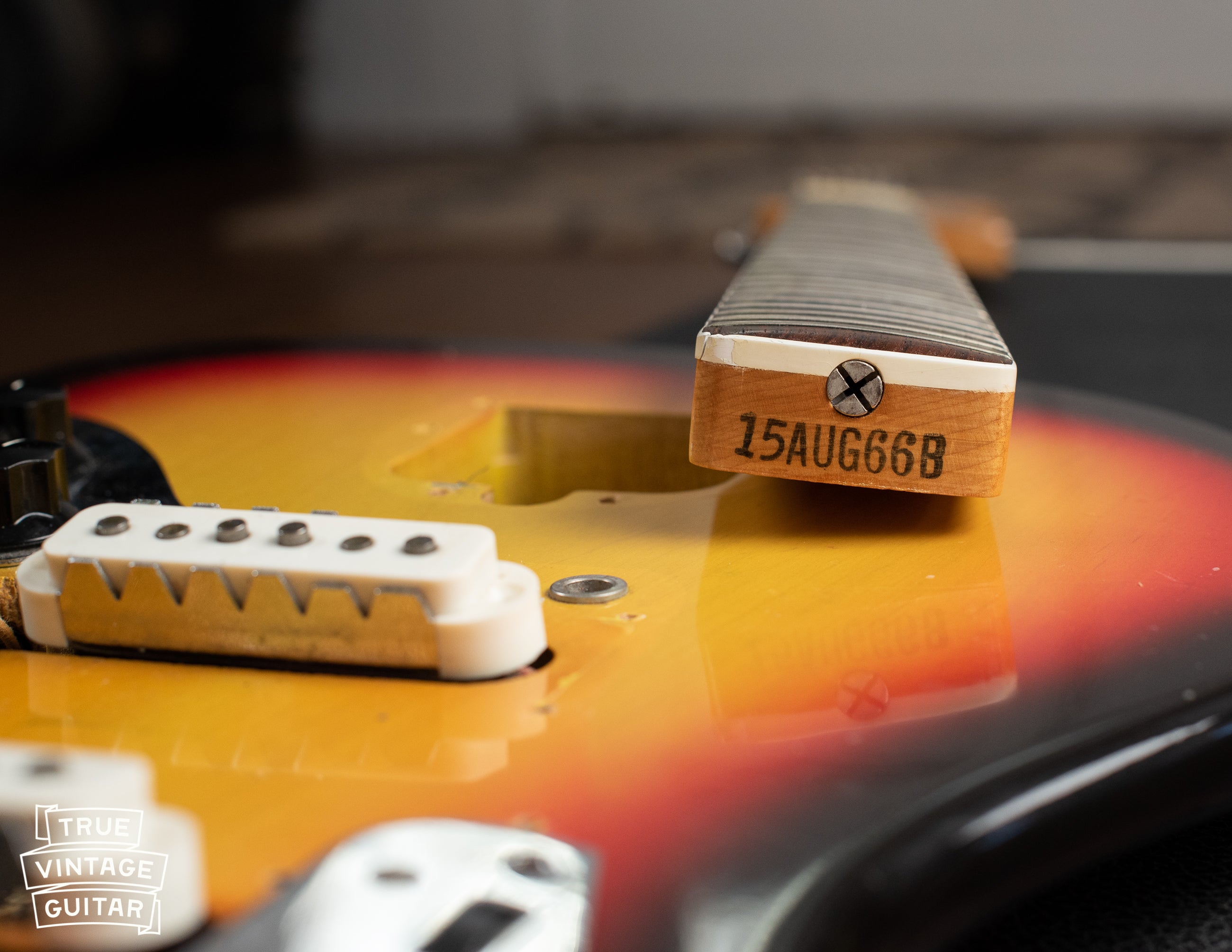
This picture is of the heel of the neck with the date stamp applied. The stamp is "15AUG66B" which is not as easily deciphered as it looks. The "15" is not the date it was made but the body model the neck was intended to mate with. The Jaguar model's code was "1" from its introduction in 1962 until 1965. The code changed to "15" in 1966. "AUG" does indeed indicated the neck was made in August and "66" indicates 1966. The "B" letter on the end was one of four optional neck widths with B indicating the standard width, or 1 5/8" wide at the nut. An "A" desgination would indicate the skinniest width at 1 1/2", C would be 1 3/4", and D would be a very wide 1 7/8".

Here is the underside of the main control panel on this 1966 Fender Jaguar showing the volume and tone potentiometers. I love seeing the original cloth wiring that looks so cool and elegant. I can also see a clean and clear date code on the back of the volume potentiometer. The code appears to be "137 6636". This date code indicates the 36th week of 1966 made by CTS (Chicago Telephone Supply). That is the week and the year that the potentiometer was made. We must add about a month to this date in the case of this guitar to get a good ball park date for when the guitar was mostly completed since electronics were added at the end of the manufacturing process.
Here is how to read seven digit potentiometer date codes: the first three numbers indicate the manufacturer, the second two are the last two digits of the year, and the final two are the week of the year. 137 = CTS, 66 = 1966, and 36 = the 36th week.
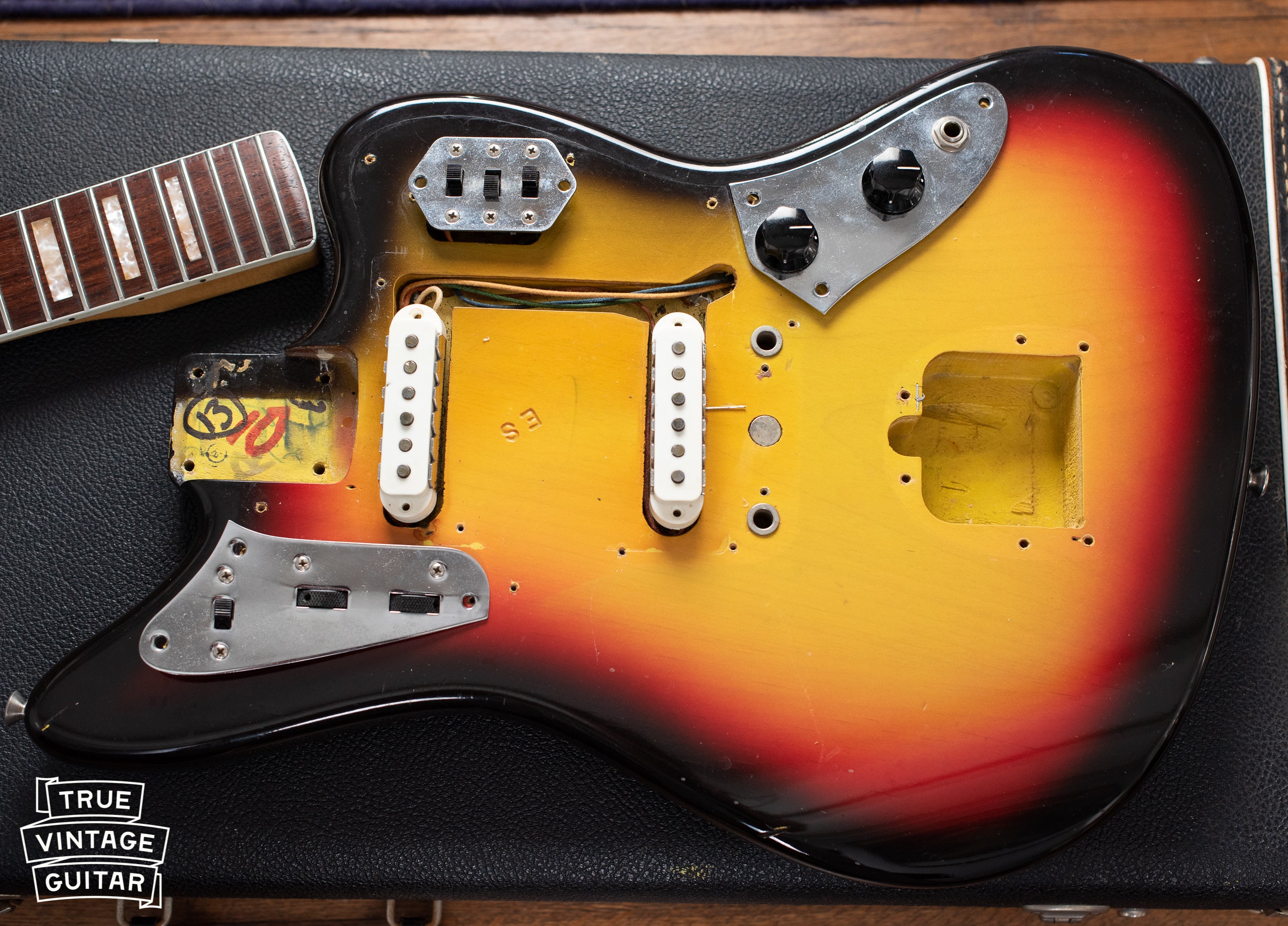
Thanks for taking a look at this killer vintage Fender Jaguar guitar! I'm always looking to buy clean examples of vintage Fender guitars. Feel free to reach out to me here at the Sell My Fender Guitar page if you would like to sell your guitar. Or, if you'd like a professionals help with how to identify or how to date your vintage Fender guitar, click the Contact Me button. I'd love to check out your guitar.

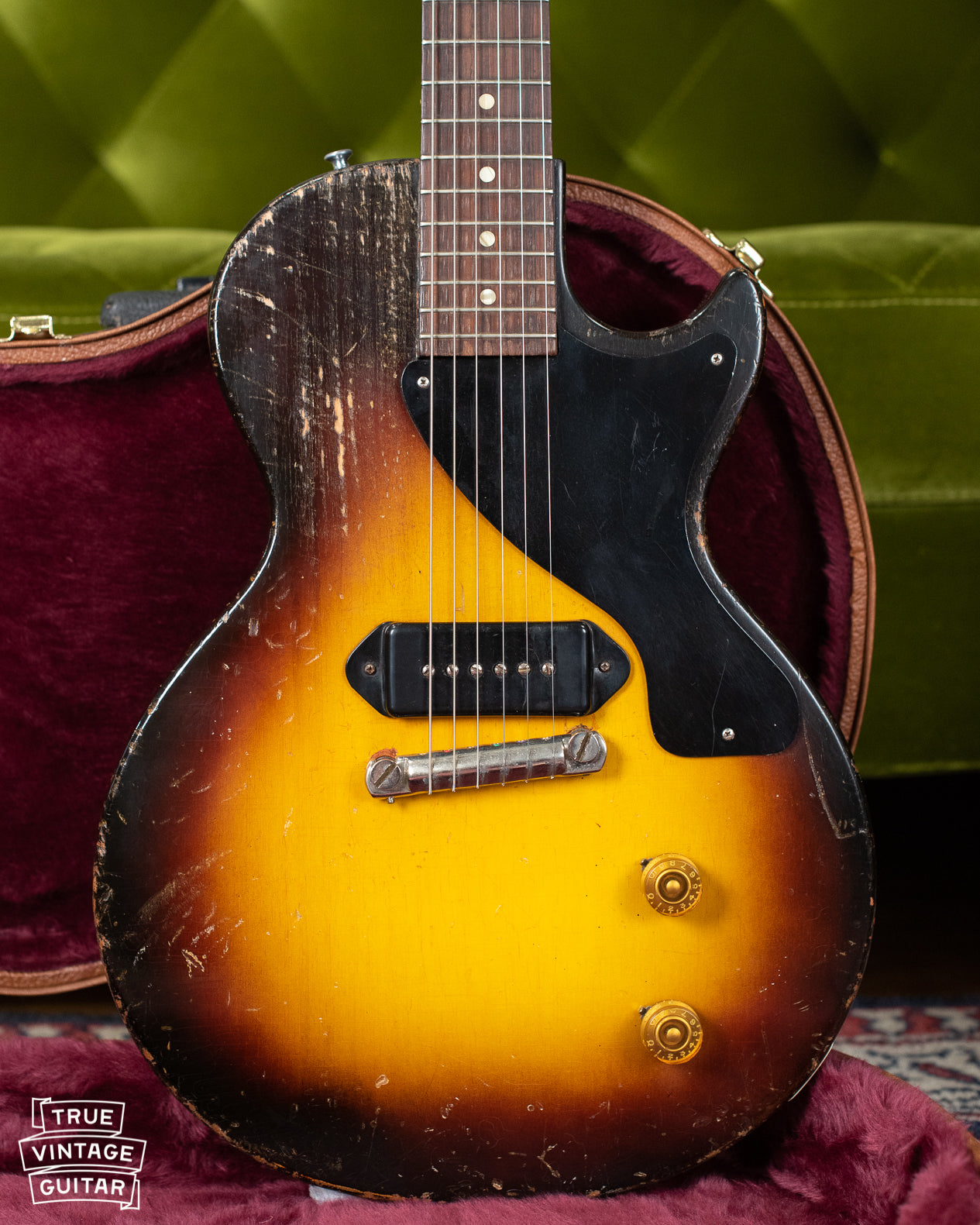
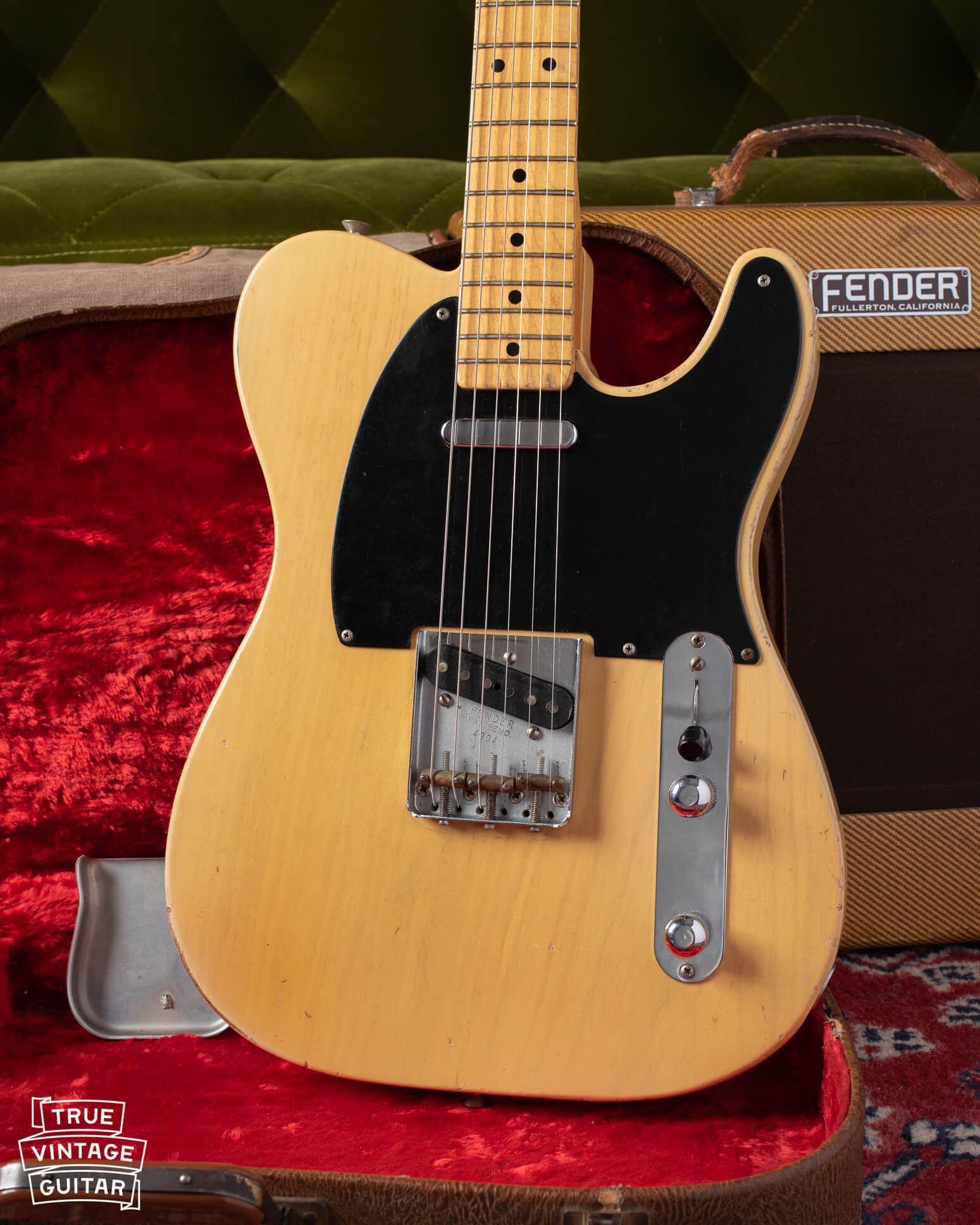
Comments
Hey there, this may be a dumb question but what is the round metal between the two bridge posts? I’ve noticed jaguars have 3 holes drilled but Jazzmasters only have 2 in the bridge area. Thanks for the info!